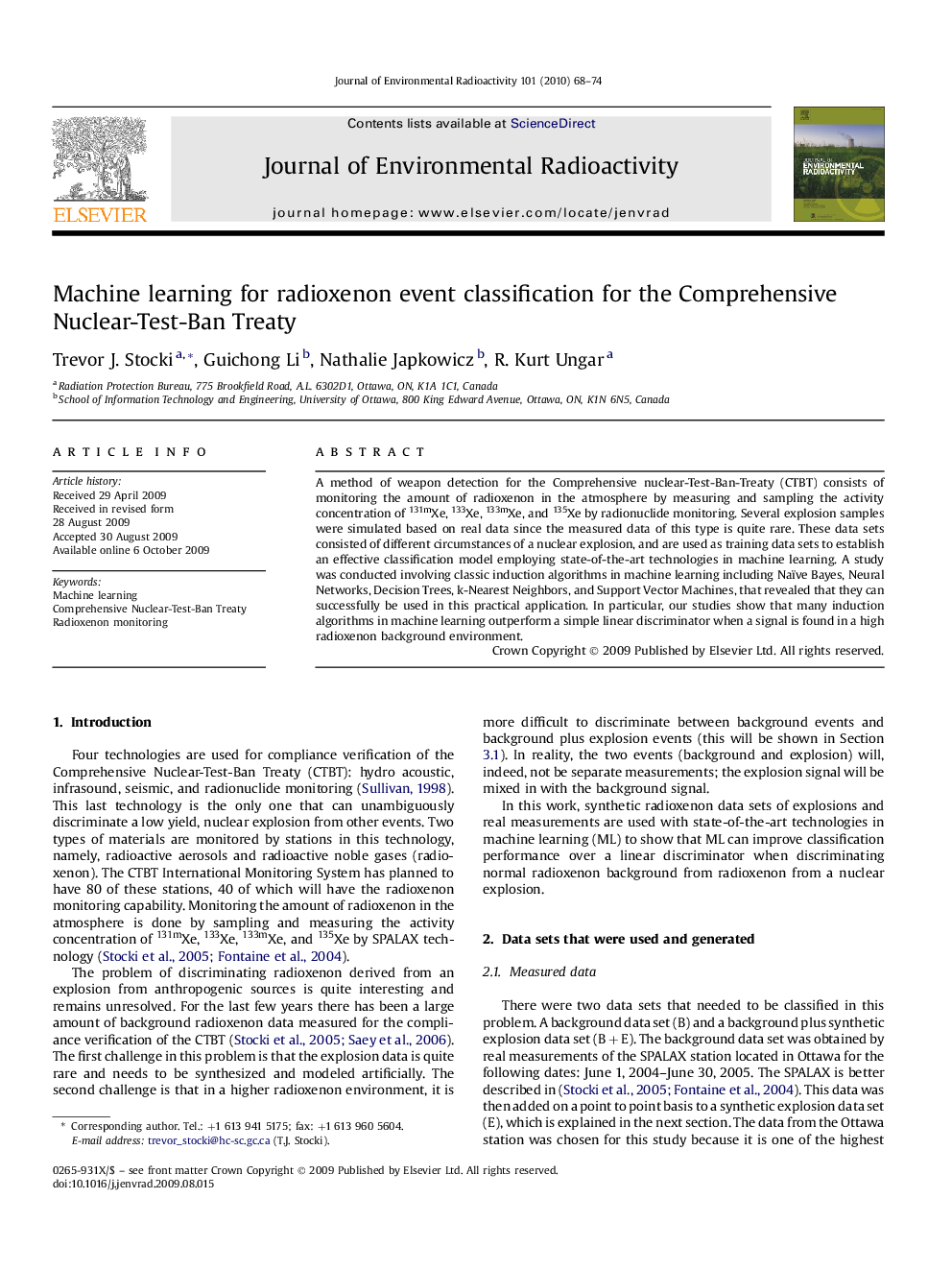| Article ID | Journal | Published Year | Pages | File Type |
|---|---|---|---|---|
| 1738857 | Journal of Environmental Radioactivity | 2010 | 7 Pages |
A method of weapon detection for the Comprehensive nuclear-Test-Ban-Treaty (CTBT) consists of monitoring the amount of radioxenon in the atmosphere by measuring and sampling the activity concentration of 131mXe, 133Xe, 133mXe, and 135Xe by radionuclide monitoring. Several explosion samples were simulated based on real data since the measured data of this type is quite rare. These data sets consisted of different circumstances of a nuclear explosion, and are used as training data sets to establish an effective classification model employing state-of-the-art technologies in machine learning. A study was conducted involving classic induction algorithms in machine learning including Naïve Bayes, Neural Networks, Decision Trees, k-Nearest Neighbors, and Support Vector Machines, that revealed that they can successfully be used in this practical application. In particular, our studies show that many induction algorithms in machine learning outperform a simple linear discriminator when a signal is found in a high radioxenon background environment.
